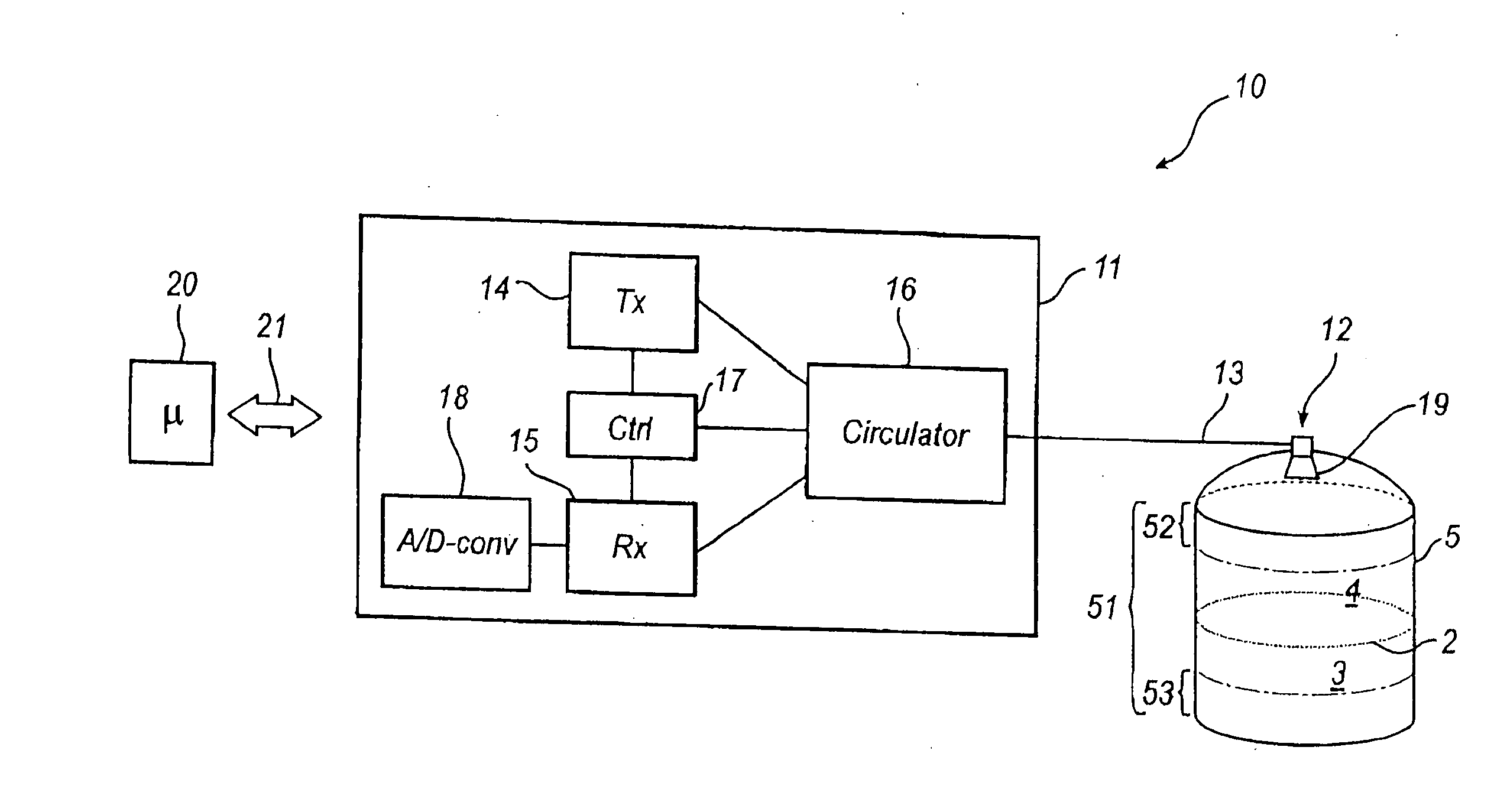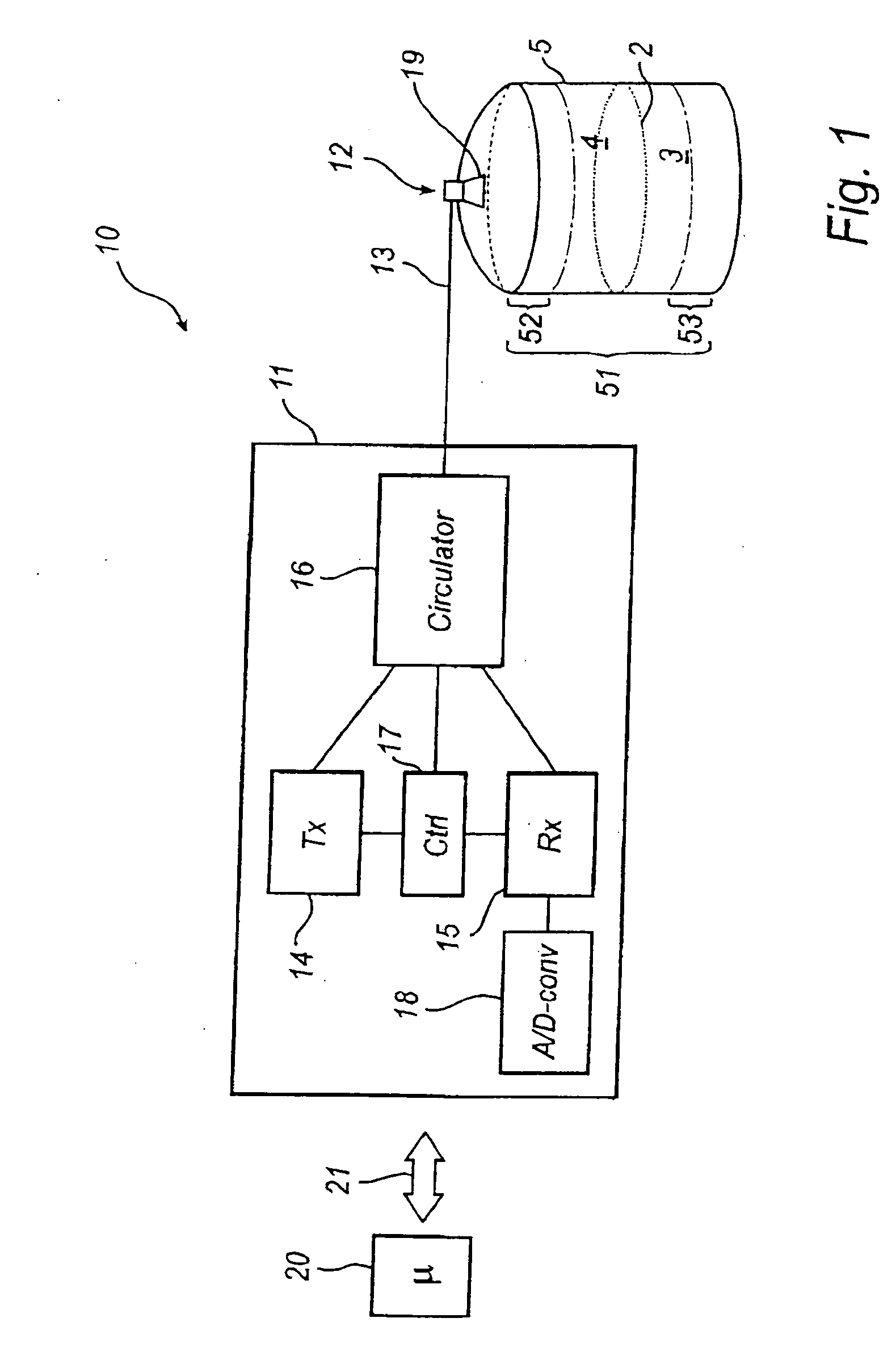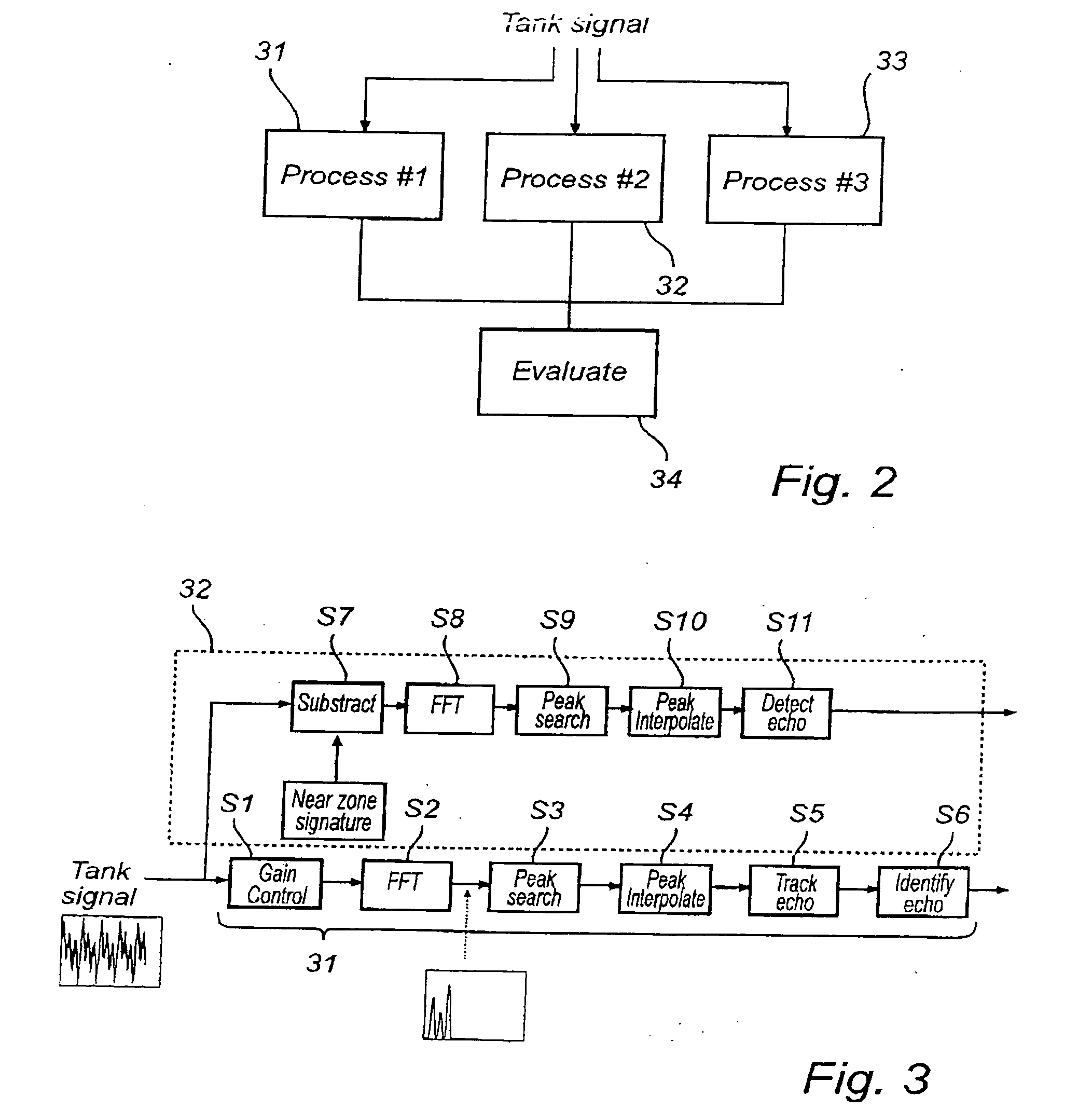Processing of tank signal in radar level gauge system
a technology of radar level gauge and tank signal, which is applied in the direction of using reradiation, measurement devices, radio wave reradiation/reflection, etc., can solve the problems of complicated rlg measurement process, not necessarily optimal, and typical optimized signal processing
- Summary
- Abstract
- Description
- Claims
- Application Information
AI Technical Summary
Benefits of technology
Problems solved by technology
Method used
Image
Examples
Embodiment Construction
[0027]FIG. 1 shows a schematic block diagram of a radar level gauge (RLG) 10, in which the present invention has been implemented. The gauge 10 is arranged to perform measurements of a process variable in a tank, such as th level of an interface 2 between two (or more) materials 3, 4 in the tank 5. Typically, the first material 3 is a content stored in the tank, e.g. a liquid such as gasoline, while the second material 4 is air or some other atmosphere. In that case, the RLG will enable detection of the level of the surface of the content in the tank. Note that different tank contents have different impedance, and that the electromagnetic waves will only propagate through some materials in the tank. Typically, therefore, only the level of a first liquid surface is measured, or a second liquid surface if the first liquid is sufficiently transparent.
[0028] The RLG 10 comprises a microwave controller 11, a microwave emitter / receiver 12, and a signal transfer medium 13 connecting the e...
PUM
 Login to View More
Login to View More Abstract
Description
Claims
Application Information
 Login to View More
Login to View More - R&D
- Intellectual Property
- Life Sciences
- Materials
- Tech Scout
- Unparalleled Data Quality
- Higher Quality Content
- 60% Fewer Hallucinations
Browse by: Latest US Patents, China's latest patents, Technical Efficacy Thesaurus, Application Domain, Technology Topic, Popular Technical Reports.
© 2025 PatSnap. All rights reserved.Legal|Privacy policy|Modern Slavery Act Transparency Statement|Sitemap|About US| Contact US: help@patsnap.com



